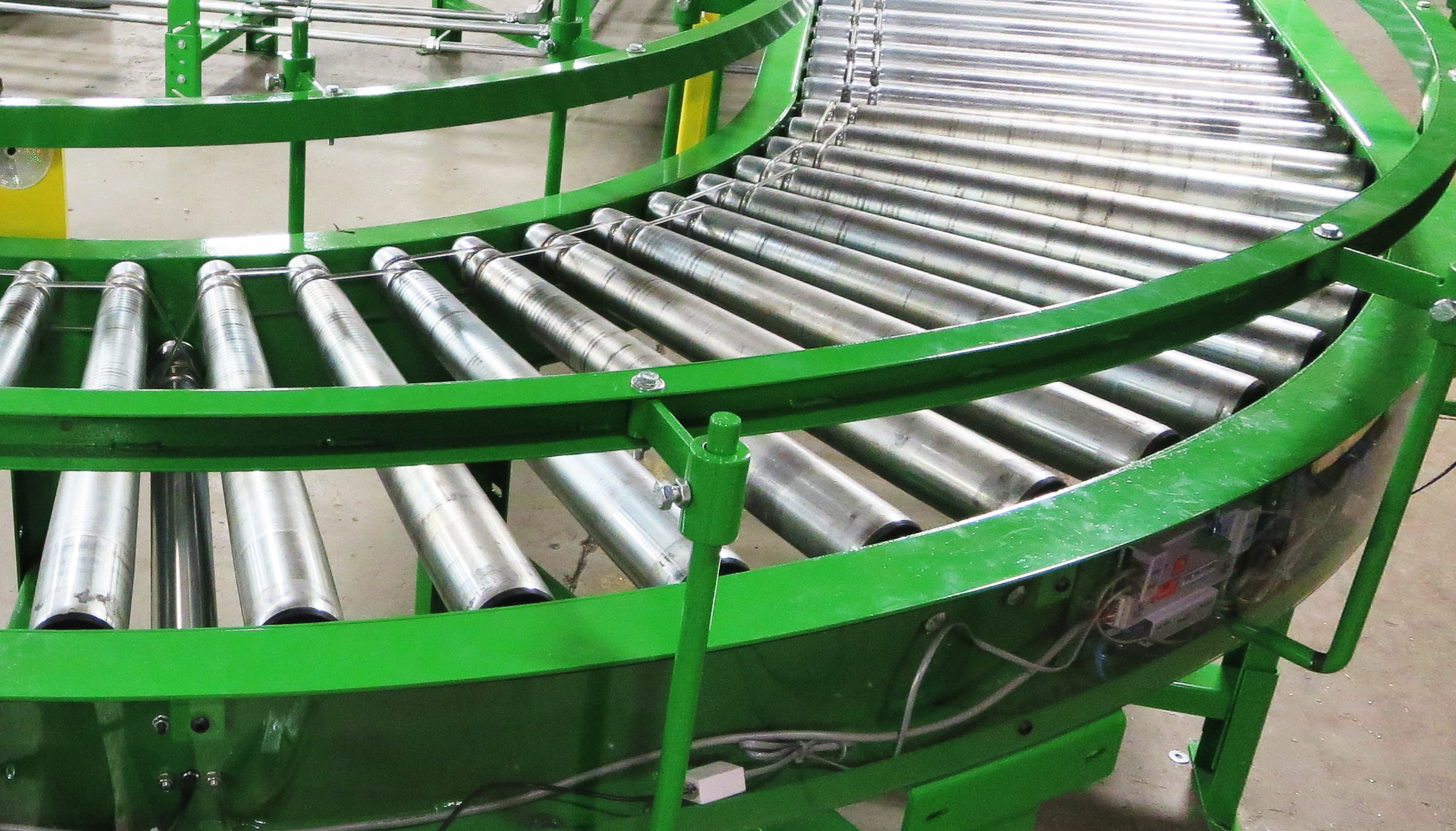Quick (and somewhat obvious) Accumulation Conveyor Safety Tips
Conveyors are the workhorses of the material handling world, continuously moving and sorting materials large and small. However, if not used safely, they can be some of the most dangerous pieces of equipment on your plant floor. It never hurts to remind ourselves of some quick and obvious safety tips.
Reduce the number of nip and shear points.
Large, conventional motors can be extremely dangerous for your warehouse personnel. A stray hand, limb or piece of clothing can lead to tragic injury if caught up in a bad place or pinch point while the conveyor is running. Conventional motors also use tremendous amounts of power, which can present additional warehouse dangers.
 Note: A PULSEROLLER motorized drive roller used in a typical accumulation zone is powered by 24 volts DC with no major pinch points. Moreover, our MDRs only have to provide motive power and torque to a short zone, so there is never enough drive power to be dangerous. In most cases, you can grab a PULSEROLLER running motorized roller with your bare hand and make it stop with only a handshake grip.
Note: A PULSEROLLER motorized drive roller used in a typical accumulation zone is powered by 24 volts DC with no major pinch points. Moreover, our MDRs only have to provide motive power and torque to a short zone, so there is never enough drive power to be dangerous. In most cases, you can grab a PULSEROLLER running motorized roller with your bare hand and make it stop with only a handshake grip.
Install permanent barrier guards
Permanent barrier guards protect workers from nip and shear points around all moving parts of the drive system. For example, the unused section of rollers closest to the worker should be guarded when transporting small items on a roller conveyor that do not require the use of the entire roller width.
Guards may include enclosures, grating, barriers, fences or other obstructions that prevent physical contact with operating machine components, such as point-of-operation areas, belts, sprockets, gears, chains, and other moving parts.
Place emergency stop switches along sections of the conveyor
Unless your conveying system is guarded by location (eg. more than eight feet above the working surface, it must include emergency stops. They must be placed strategically for easy operator access and should be designed to stop all motion within predetermined sections of the conveyor and sound an alarm. There is much written about emergency stops, and the topic is governed by OSHA. Educate yourself on this topic!
Inspect the conveyor
You should inspect your conveyor periodically to ensure all components are in good working order and that no hazards have been created from defective or damaged equipment. Also, test your emergency stop switches often to ensure they operate properly when you need them most, especially if you haven't used them in a while. Depending on your facility and application, you may have multiple stop controls that stop the line closest to where the emergency stop is pressed while allowing other lines to continue moving.
Lock out and tag out
You should never do maintenance or repair work when a conveyor is moving. Make sure the conveyor is locked out and that electrical power to the conveyor is tagged out or off. You should also ensure the conveyor can’t move in such a way as to be hazardous during the repair.
No conveyor is 100% safe, but by including recommended safety features in your conveyor design, you can reduce the risk of injury significantly.
